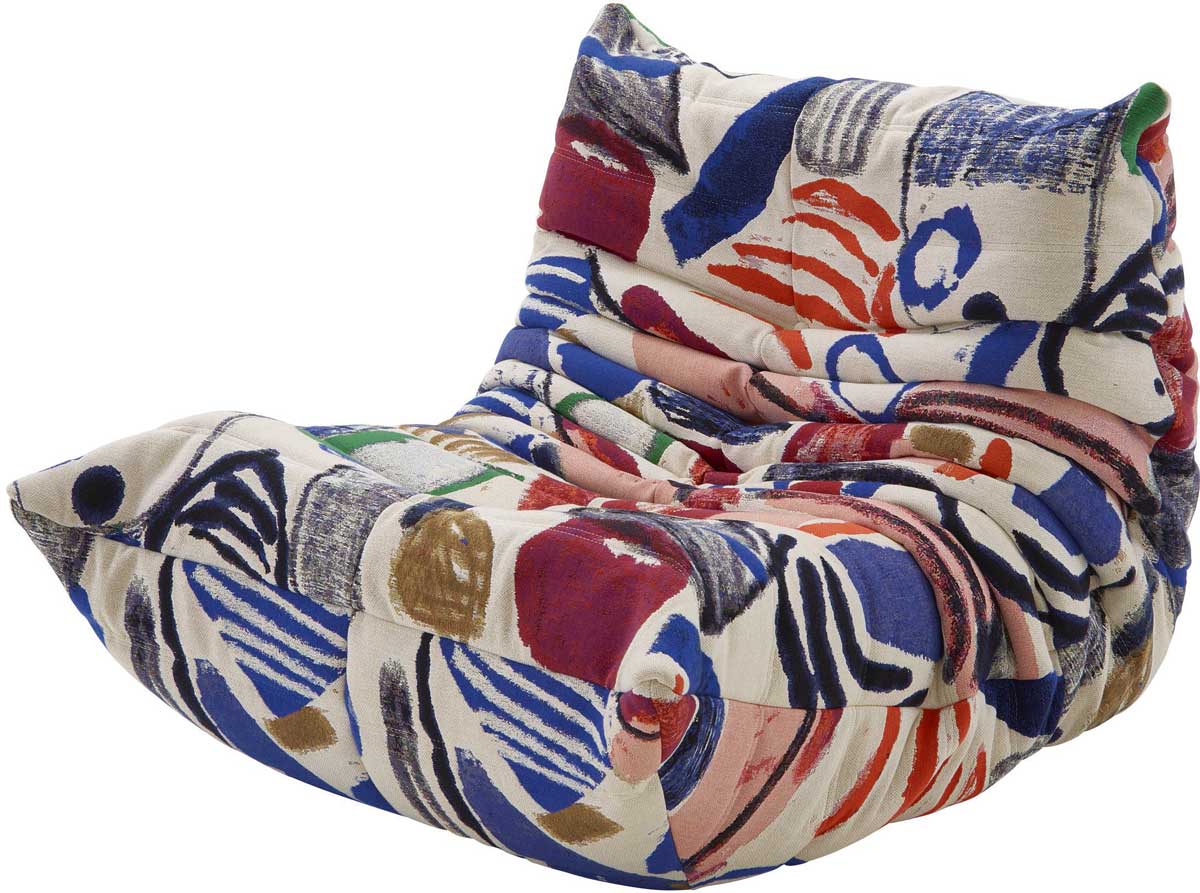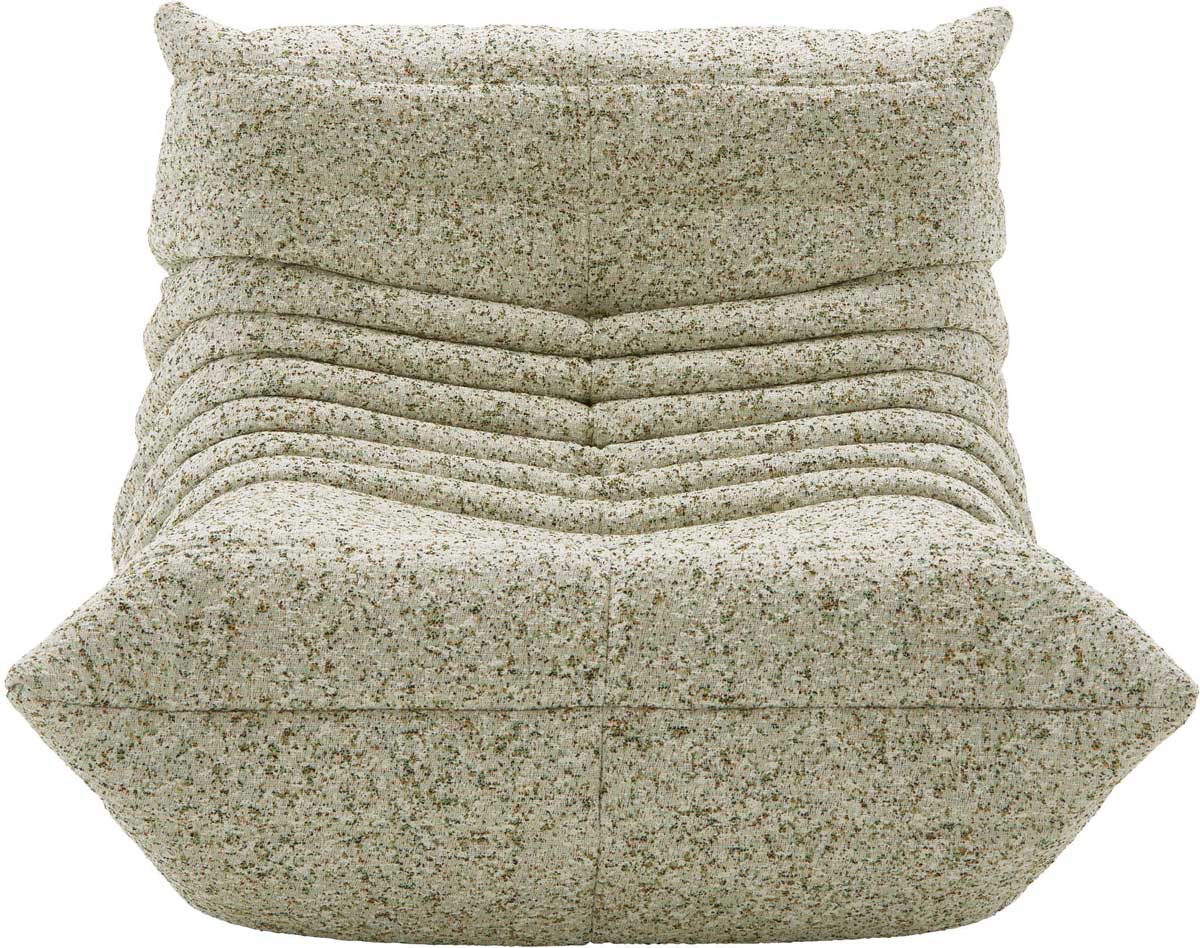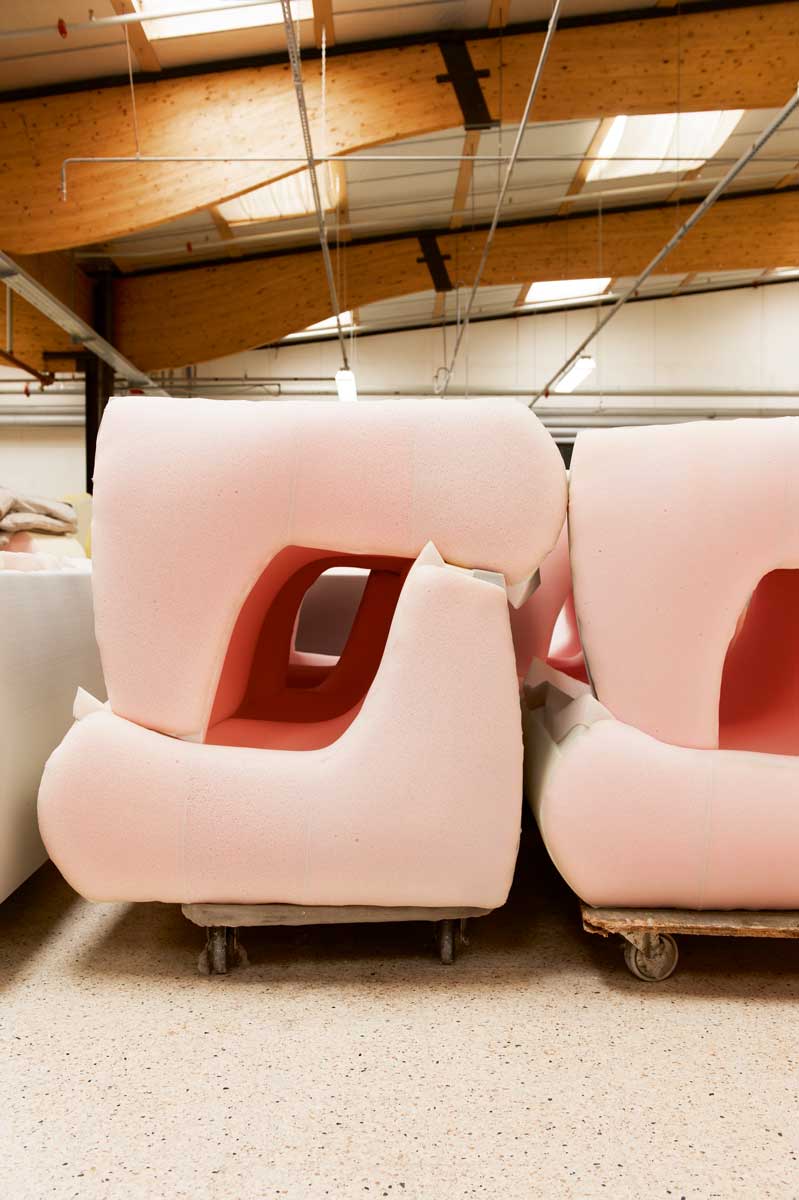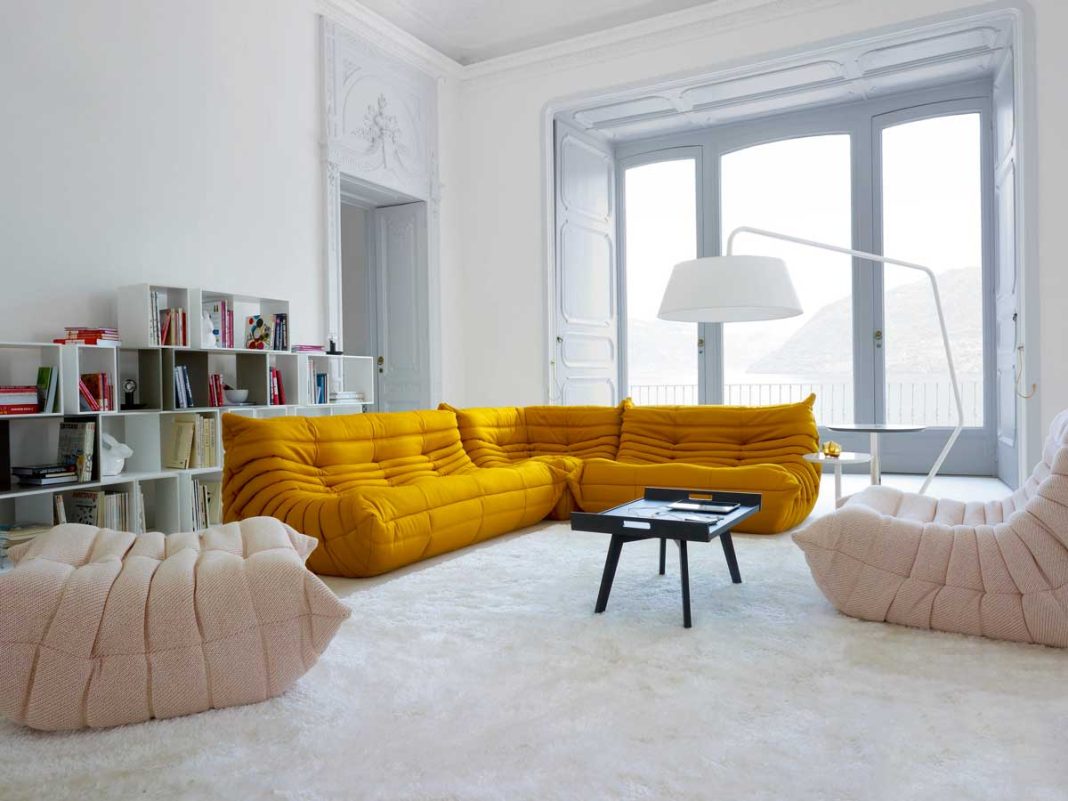The laidback Togo has been a feature in modish homes since its inception in 1973
words Miriam Methuen-Jones
Unique is a word used too easily in the design business, but it really does apply to the Togo by Ligne Roset.
The celebrated king of the squish has been around for half a century, and there’s still nothing quite like it. These days, it crops up again and again across Instagram feeds worldwide, particularly in the studiously nonchalant homes of celebrities and influencers, a perennial symbol of anti-conformity.
Its designer, Michel Ducaroy, who was born in Lyon in 1925, was certainly a rule-breaker: he was apparently inspired by the shape of a folded-over toothpaste tube – hardly the most conventional starting point for a sofa.
But this was the early 1970s and French furniture manufacturer Ligne Roset was refocusing its business strategy to appeal to a more creative market. It was time to experiment.
Despite meeting with some scepticism, particularly since it didn’t include a base or a frame, the Togo won the prestigious René-Gabriel prize at the Salon des Arts Ménagers in 1973 in recognition of its ‘innovative and democratic’ design.

The Togo’s casual and deconstructed form, reminiscent of a beanbag or floor cushion but internally crafted entirely from foam, proved understandably popular with a ’70s audience.
Low-slung and modular, it defied tradition and was affordable. It was lightweight too, so could be easily manoeuvred, making it ideal for house parties.
Ducaroy developed further pieces to coordinate with the original sofa, allowing you to arrange your living room to suit yourself, an appealing idea to creative-minded folk who were taking a keen interest in the design of their own homes.
A standard three-piece suite this was not.

As interiors trends moved on, the carefree nature of the Togo could easily have been left behind.
Instead, Ligne Roset adapted and updated. Different colours and fabrics were regularly introduced, and a children’s version, the Mini Togo, was launched in 2007.
Special editions, including collaborations with Pierre Frey (above) and Raf Simons (below) for the 50th anniversary this year, have helped to keep the style relevant.
So far, more than 1.5 million pieces have been sold in 72 different countries. The Togo is very much still alive and kicking.

Chief executive Olivier Roset compares it to the Porsche 911. “It’s such an iconic product,” he says.
“It has seen some ups and downs over the decades, but icons like the Togo or the 911 will never disappear. It’s a phoenix. It’ll last through the decades.”
It’s an accurate comparison, in terms of sex appeal, brand recognition and longevity. Certainly, in some circles, bagging a mint-condition vintage Togo earns just as much bragging rights as a classic car.
Unlike a Porsche though, the Togo is still somewhat in reach for your average Joe.
A vintage sofa from the ’70s will set you back about £3,000 (via the likes of 1stDibs), and a brand new fireside armchair starts at £1,880.
The sofas aren’t cheap, but you’re investing in hand-crafted design. In the grand scheme of things, these icons are accessible.

But why is this big softie still so popular? “Because it is you and me, it’s everybody,” muses Roset.
“Togo, its shape, its comfort, is familiar to all generations and to all cultures. It’s a reminder of childhood and is synonymous with joy, family and pleasure.”
As cultural moods shift, and the ‘hustle’ is shelved in favour of mindfulness and a slower pace of life, it would be no surprise if the Togo goes on to celebrate another 50 years of cult status.
We should be prioritising comfort. Bring on the foam.




